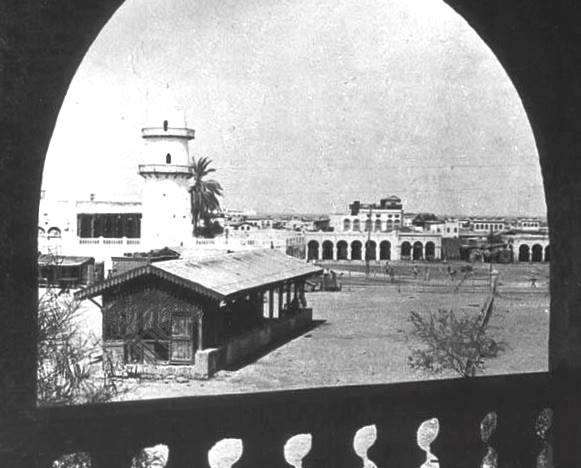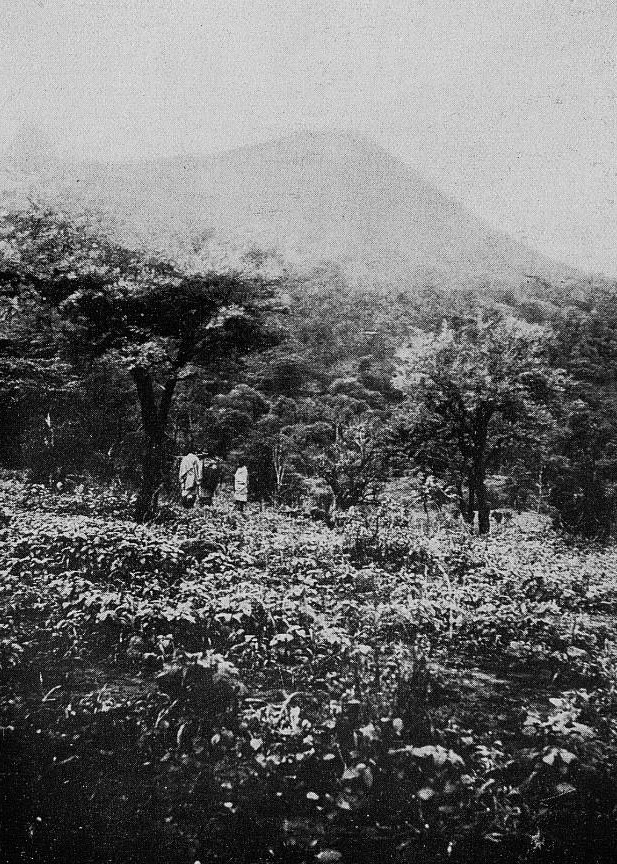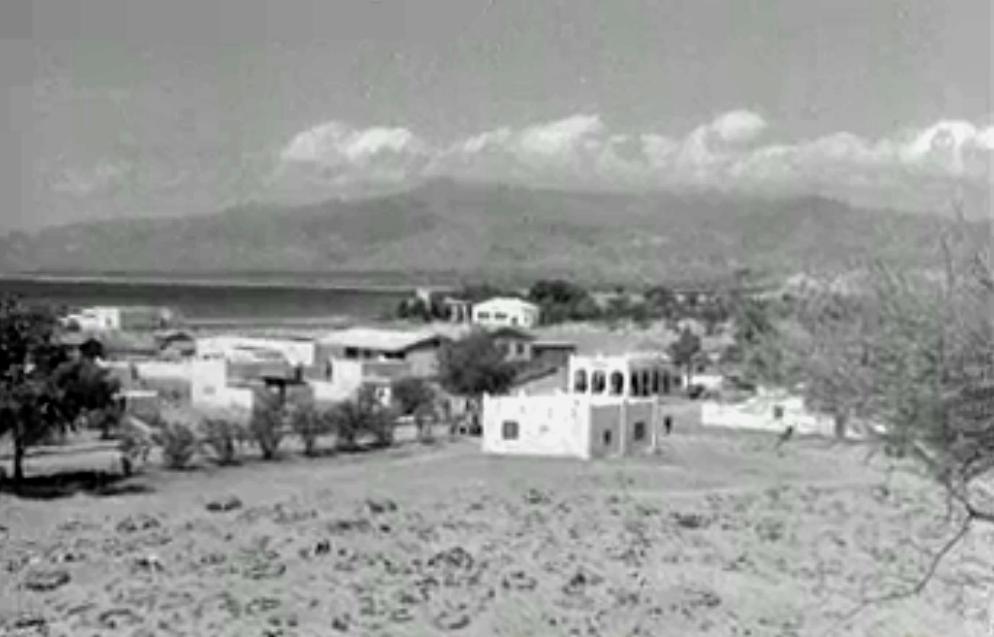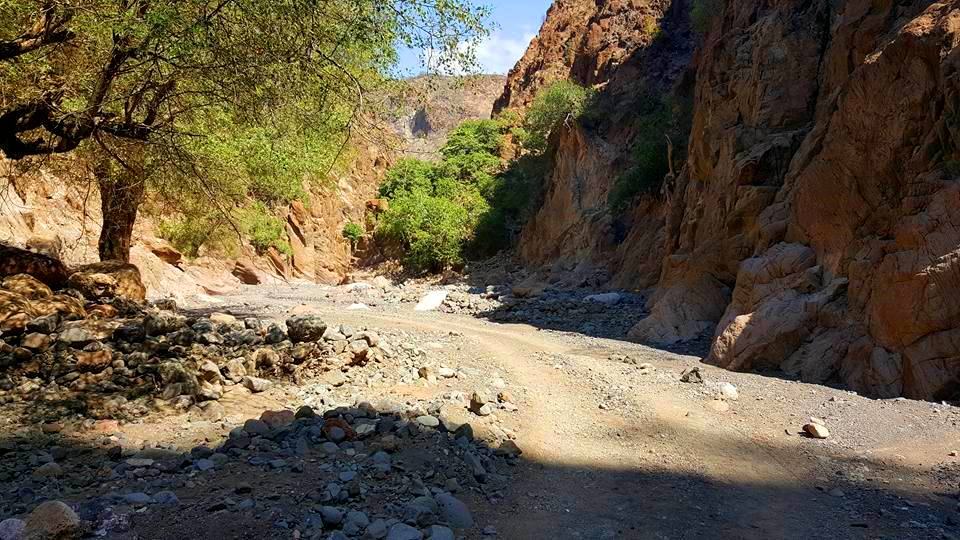|
Obock Region
The Obock Region ( aa, Rakaakay Obock, ar, إقليم أوبوخ, so, Gobolka Obokh) is a region in northern Djibouti. It has a land area of 4,700 square kilometres (1,800 sq mi), and had a population of 37,856 in 2009. It lies along the Red Sea, Bab-el-Mandeb, Gulf of Aden, Gulf of Tadjoura and includes the Seven Brothers, Doumeira Islands and the coastal city of Obock. It lies along a portion of the national border with Eritrea. In total area, it is larger than Cape Verde and smaller than Trinidad and Tobago. The topography of the region has highland and coastal plains. History In the mid-19th century and earlier, Obock was ruled by Afar Sultans, local authorities with whom France signed various treaties between 1883 and 1887 to first gain a foothold in the region.Raph Uwechue, ''Africa year book and who's who'', (Africa Journal Ltd.: 1977), p.209.''A Political Chronology of Africa'', (Taylor & Francis), p.132. The March 11, 1862 agreement the Afar sultan, Raieta Dini Ah ... [...More Info...] [...Related Items...] OR: [Wikipedia] [Google] [Baidu] |
Regions Of Djibouti
The regions of Djibouti are the primary geographical divisions through which Djibouti is administered. History The first administrative division of the territory, in 1914, defined two zones besides the city of Djibouti: the districts "Dankali" and "Issa". With the occupation of the territory at the end of the 1920s, the circles of Tadjoura and " Gobad-Dikkil" are created. In 1939, the circle of Ali Sabieh Ali Sabieh ( so, Cali Sabiix, ar, علي صبيح) is the second largest city in Djibouti. It is situated about Southwest of Djibouti City and north of the border with Ethiopia. It sprawls on a wide basin surrounded by granitic mountains on all ... is extracted from the last. In 1963, Obock's circle was created by division of that of Tadjourah region. In 1967, the circle of Djibouti is transformed into district, then divided into three districts. After independence in 1977, the circles become regions. The last important modification of the administrative map of the territor ... [...More Info...] [...Related Items...] OR: [Wikipedia] [Google] [Baidu] |
Sultan
Sultan (; ar, سلطان ', ) is a position with several historical meanings. Originally, it was an Arabic abstract noun meaning "strength", "authority", "rulership", derived from the verbal noun ', meaning "authority" or "power". Later, it came to be used as the title of certain rulers who claimed almost full sovereignty (i.e., not having dependence on any higher ruler) without claiming the overall caliphate, or to refer to a powerful governor of a province within the caliphate. The adjectival form of the word is "sultanic", and the state and territories ruled by a sultan, as well as his office, are referred to as a sultanate ( '. The term is distinct from king ( '), despite both referring to a sovereign ruler. The use of "sultan" is restricted to Muslim countries, where the title carries religious significance, contrasting the more secular ''king'', which is used in both Muslim and non-Muslim countries. Brunei and Oman are the only independent countries which retain the ti ... [...More Info...] [...Related Items...] OR: [Wikipedia] [Google] [Baidu] |
Dorcas Gazelle
The dorcas gazelle (''Gazella dorcas''), also known as the ariel gazelle, is a small and common gazelle. The dorcas gazelle stands about at the shoulder, with a head and body length of and a weight of . The numerous subspecies survive on vegetation in grassland, steppe, wadis, mountain desert and in semidesert climates of Africa and Arabia. About 35,000–40,000 exist in the wild. Taxonomy and evolution The scientific name of the dorcas gazelle is ''Gazella dorcas''. It is a member of the genus ''Gazella'' and the family Bovidae. The species was first described by Swedish zoologist Carl Linnaeus in the 10th edition of ''Systema Naturae'' in 1758. Although zoologist Theodor Haltenorth considered ''G. d. pelzelnii'' to be an independent species, the following six subspecies are identified: *''G. d.'' subsp. ''beccarii'' De Beaux, 1931 – Eritrean dorcas gazelle *''G. d.'' subsp. ''dorcas'' (Linnaeus, 1758) – Egyptian dorcas gazelle *''G. d.'' subsp. ''isabella'' Gray, ... [...More Info...] [...Related Items...] OR: [Wikipedia] [Google] [Baidu] |
Soemmerring's Gazelle
Soemmerring's gazelle (''Nanger soemmerringii''), also known as the Abyssinian mohr, is a gazelle species native to the Horn of Africa (Djibouti, Eritrea, Ethiopia, Somalia and South Sudan). The species was described and given its binomen by German physician Philipp Jakob Cretzschmar in 1828. Three subspecies are recognized. It is possibly no longer present in Sudan. Since 1986, Soemmerring's gazelle has been classified as Vulnerable by the International Union for Conservation of Nature (IUCN). Taxonomy and evolution The scientific name of Soemmerring's gazelle is ''Nanger soemmerringii''. Formerly considered member of genus ''Gazella'' within the subgenus ''Nanger'' before ''Nanger'' was elevated to genus status, Soemmerring's gazelle is one of members of the genus ''Nanger'' and is classified under the family Bovidae. The species was described and given its binomial name by German physician Philipp Jakob Cretzschmar in the ''In Rüppell, Atlas zu der reise im nördlichen Afr ... [...More Info...] [...Related Items...] OR: [Wikipedia] [Google] [Baidu] |
Hamadryas Baboon
The hamadryas baboon (''Papio hamadryas'' ) is a species of baboon within the Old World monkey family. It is the northernmost of all the baboons, being native to the Horn of Africa and the southwestern region of the Arabian Peninsula. These regions provide habitats with the advantage for this species of fewer natural predators than central or southern Africa where other baboons reside. The hamadryas baboon was a sacred animal to the ancient Egyptians and appears in various roles in ancient Egyptian religion, hence its alternative name of 'sacred baboon'.Swedell 2015 Description Apart from the striking sexual dimorphism (males are nearly twice as large as females, which is common to most baboons) this species also shows differences in coloration among adults. Adult males have a pronounced cape (mane and mantle), silver-white in color, which they develop around the age of ten, while the females are capeless and brown all over. Their faces range in color from reddish to tan to ... [...More Info...] [...Related Items...] OR: [Wikipedia] [Google] [Baidu] |
Djibouti City
Djibouti (also called Djibouti City and in many early English texts and on many early maps, Jibuti; so, Magaalada Jabuuti, french: link=no, Ville de Djibouti, ar, مدينة جيبوتي, aa, Gabuutî Magaala) is the eponymous capital of Djibouti, and has more people than the rest of Djibouti combined. It is located in the coastal Djibouti Region on the Gulf of Tadjoura. Djibouti has a population of around 600,000 inhabitants, which counts for 54% of the country's population. The settlement was founded in 1888 by the French, on land leased from the ruling Somali and Afar Sultans. During the ensuing period, it served as the capital of French Somaliland and its successor the French Territory of the Afars and Issas. Known as the ''Pearl of the Gulf of Tadjoura'' due to its location, Djibouti is strategically positioned near the world's busiest shipping lanes and acts as a refueling and transshipment center. The Port of Djibouti is the principal maritime port for imports to and ... [...More Info...] [...Related Items...] OR: [Wikipedia] [Google] [Baidu] |
Yemen
Yemen (; ar, ٱلْيَمَن, al-Yaman), officially the Republic of Yemen,, ) is a country in Western Asia. It is situated on the southern end of the Arabian Peninsula, and borders Saudi Arabia to the Saudi Arabia–Yemen border, north and Oman to the Oman–Yemen border, northeast and shares maritime borders with Eritrea, Djibouti, and Somalia. Yemen is the second-largest Arabs, Arab sovereign state in the peninsula, occupying , with a coastline stretching about . Its constitutionally stated Capital city, capital, and largest city, is Sanaa. As of 2021, Yemen has an estimated population of some 30.4 million. In ancient times, Yemen was the home of the Sabaeans, a trading state that included parts of modern-day Ethiopia and Eritrea. Later in 275 AD, the Himyarite Kingdom was influenced by Judaism. Christianity arrived in the fourth century. Islam spread quickly in the seventh century and Yemenite troops were crucial in the early Islamic conquests. Several Dynasty, dynasties ... [...More Info...] [...Related Items...] OR: [Wikipedia] [Google] [Baidu] |
Mabla Mountains
The Mabla Mountains (variants: Monti Mabla, Monts Mabla) are a mountain range in the northern Obock and Tadjoura Region of Djibouti. The endemic Djibouti spurfowl makes its home here as well as in the Forêt du Day. With a mean height of 1370 metres, is the fifth highest point in Djibouti. Geography Along with Forêt du Day, the Mabla Mountains are one of Djibouti's two remnant areas of closed forest. The range is located in the Obock Region, west of Obock, a port town. At above sea level, the mountains are situated behind the coastal plain where the Red Sea meets the Gulf of Aden. They lie on the northern side of the Gulf of Tadjoura, and are characterized as a highland region. The mountains consist of a range that extends north from near Ras Duan, a steep cliff. Accolado Mount (''Assasanto''), above sea level, is the north mount of the east branch of the Mabla Mountains; it is located northwest of the Latela Valley entrance. Morne Rouge, above sea level, is north- ... [...More Info...] [...Related Items...] OR: [Wikipedia] [Google] [Baidu] |
Tadjoura
Tadjoura ( aa, Tagórri; ar, تاجوراء ''Tağūrah''; so, Tajuura) is one of the oldest towns in Djibouti and the capital of the Tadjourah Region. The town evolved into an early Islamic center with the arrival of Muslims shortly after the Hijra. An important port for many centuries, it was ruled by a succession of polities, including the Ifat Sultanate, Adal Sultanate, the Ottoman Empire, France until Djibouti's independence in 1977. Lying on the Gulf of Tadjoura, it is home to a population of around 45,000 inhabitants. It is the third largest city in the country after Djibouti and Ali Sabieh. Tadjoura has an airstrip and is linked by ferry with Djibouti City. It is also known for its whitewashed buildings and nearby beaches, along with its mosques. Etymology The Afar name ''Tagórri'' derives from the noun ''tágor'' or ''tógor'', (pl. ''tágar'' meaning "outre à puiser" ("goatskin flask for drawing water"). The name ''Tagórri'' is specifically derived from *''ta ... [...More Info...] [...Related Items...] OR: [Wikipedia] [Google] [Baidu] |
Tadjourah Region
The Tadjourah Region so, Gobolka Tajoora, aa, Rakaakay Tagórri) is a region in north-central Djibouti, the largest of its six regions. With its capital at Tadjourah, it has an area of 7,100 square kilometres (2,700 sq mi). It lies along the Gulf of Tadjoura, and the coastal city of Tadjoura. The region has active salt and fisheries industries, and is served by the Tadjoura Airport. In total area, it is larger than Brunei and smaller than Cyprus. History The boundaries of the present-day Djibouti nation state were established during the Scramble for Africa. The first French establishment in the Horn of Africa, and in 1884 they sign a treaty with the Afar. The poet Arthur Rimbaud became a trader, and lived in Tadjoura from 1885 to 1886. He was the owner of a particular ship carrying weapons to be sold to the King of Shoa, cousin of the father of future Ethiopian Emperor Haile Selassie. In 1883 the French Somaliland (french: Côte française des Somalis) was officially fou ... [...More Info...] [...Related Items...] OR: [Wikipedia] [Google] [Baidu] |
Michel Azenor
Michel may refer to: * Michel (name), a given name or surname of French origin (and list of people with the name) * Míchel (nickname), a nickname (a list of people with the nickname, mainly Spanish footballers) * Míchel (footballer, born 1963), Spanish former footballer and manager * ''Michel'' (TV series), a Korean animated series * German auxiliary cruiser ''Michel'' * Michel catalog, a German-language stamp catalog * St. Michael's Church, Hamburg or Michel * S:t Michel, a Finnish town in Southern Savonia, Finland People * Alain Michel (other), several people * Ambroise Michel (born 1982), French actor, director and writer. * André Michel (director), French film director and screenwriter * André Michel (lawyer), human rights and anti-corruption lawyer and opposition leader in Haiti * Anette Michel (born 1971), Mexican actress * Anneliese Michel (1952 - 1976), German Catholic woman undergone exorcism * Annett Wagner-Michel (born 1955), German Woman International M ... [...More Info...] [...Related Items...] OR: [Wikipedia] [Google] [Baidu] |
Assab
Assab or Aseb (, ) is a port city in the Southern Red Sea Region of Eritrea. It is situated on the west coast of the Red Sea. Languages spoken in Assab are predominantly Afar, Tigrinya, and Arabic. Assab is known for its large market, beaches and nightlife. History Assab is about 50 km NW of the ancient city of Arsinoe Epidires. On 15 November 1869 the port of Assab was bought by the Rubattino Shipping Company of Italy from the local Sultan. After the Italian government took over control of the port on 5 July 1882 it laid the foundations for the formation of the colony of Italian Eritrea, which became the independent country of Eritrea following its independence from the Transitional Government of Ethiopia in the 1990s. Construction of an oil refinery began in 1964 and it opened in 1967. By 1989, Assab had a population of 39,600 inhabitants. The port facilities were greatly expanded in the early 1990s, with the construction of a new terminal. The oil refinery was shut ... [...More Info...] [...Related Items...] OR: [Wikipedia] [Google] [Baidu] |


_(1980)_Fig._161.png)




